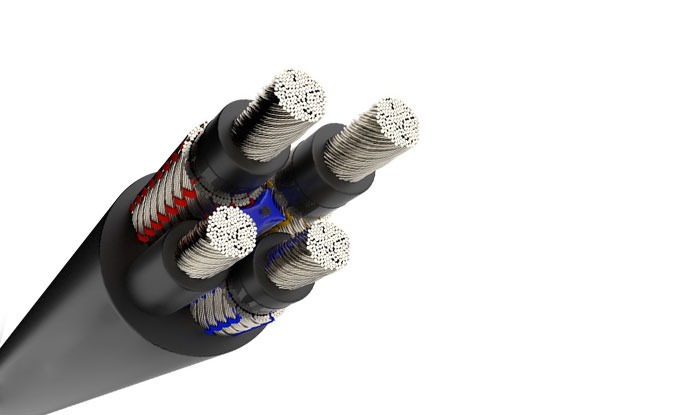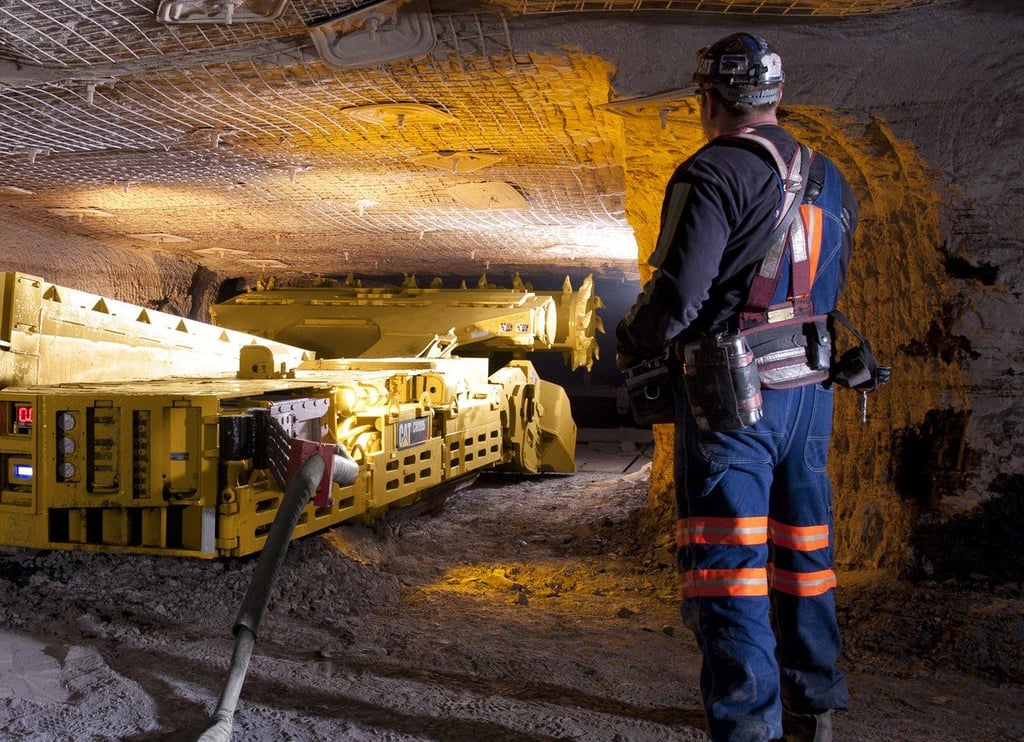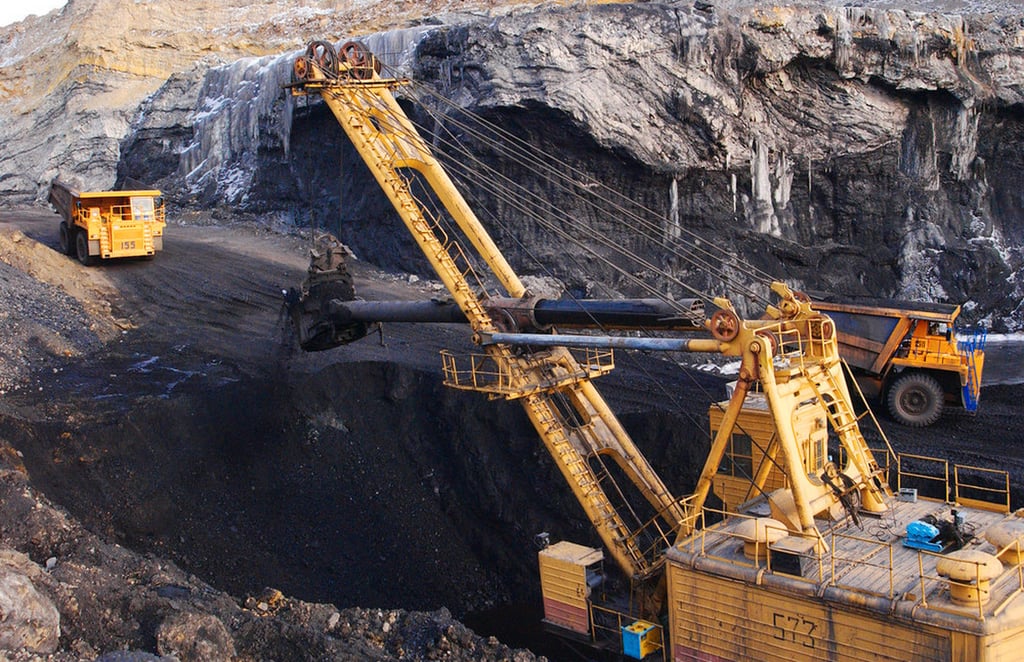Anhui Feichun Special Cable Co.,Ltd Li.wang@feichuncables.com
Why Is the SANS 1520 Type 61B Copper Shield 0.64/1.1kV Mining Cable South Africa's Most Trusted Underground Power Solution?
Discover why the Type 61B copper shield mining cable is essential for South African mines. Learn about SANS 1520 compliance, technical specifications, and applications in gold, platinum, and coal operations across SA's mining heartlands.
Li.wang@Feichun Cable
7/25/202512 min read


Introduction: Why Cable Choice Matters in South African Mining
In the depths of South Africa's world-renowned mining operations, where temperatures soar beyond 40°C and machinery operates under immense pressure thousands of metres underground, the difference between operational success and catastrophic failure often comes down to one critical component: the cables that power it all.
South African mining faces unique challenges that would humble operations anywhere else in the world. The Witwatersrand's gold mines plunge deeper than 4 kilometres below surface, whilst the platinum belt stretching across Limpopo and North West provinces demands equipment that can withstand both scorching surface temperatures and the punishing conditions of deep-level extraction. Add to this the mechanical strain of continuous operation, the corrosive effects of mining chemicals, and the ever-present risk of electrical faults in confined spaces, and it becomes clear why cable selection isn't just about conducting electricity—it's about preserving lives and livelihoods.
Recent developments in South Africa's mining sector have only heightened these concerns. Following the tragic incidents at various mining operations over the past few years, and with renewed focus on safety standards after the 2023 mining safety summits, the industry has recognised that robust electrical infrastructure isn't optional—it's fundamental to sustainable mining operations.
This is where the Type 61B Copper Shield 0.64/1.1kV mining cable emerges as South Africa's most trusted underground power solution. Designed specifically to meet the stringent requirements of SANS 1520-1 standards, this cable represents decades of engineering refinement tailored to African mining conditions. From the gold reefs of the Free State to the diamond mines of the Northern Cape, the Type 61B has proven itself as the backbone of reliable mining operations across the continent.
Overview of Type 61B Mining Cable: Engineering Excellence for African Conditions
The Type 61B mining cable isn't just another electrical conductor—it's a sophisticated engineering solution designed specifically for the brutal realities of South African mining environments. Manufactured in accordance with SANS 1520-1 standards, this flexible trailing cable represents the pinnacle of mining cable technology adapted for African conditions.
At its core, the Type 61B features a carefully engineered structure that addresses every challenge faced in underground mining operations. The conductor consists of flexible class 5 tinned annealed copper wires arranged in a left-hand lay, providing exceptional conductivity whilst maintaining the flexibility essential for trailing and reeling applications. This stranded copper construction ensures optimal current-carrying capacity even under the mechanical stress of continuous movement.
The insulation system utilises ethylene propylene thermosetting compound (type RD 3) that complies with SANS 1411-3 specifications. This advanced insulation material provides superior heat resistance, capable of withstanding conductor temperatures up to 90°C—critical for South African mines where ambient temperatures can exceed 35°C even at surface level. The triple-extruded construction includes a strippable semi-conducting core screen, ensuring reliable electrical performance whilst simplifying maintenance procedures.
What truly sets the Type 61B apart is its copper shielding system. The tinned copper braided screen provides comprehensive electromagnetic interference (EMI) protection—essential in modern mining operations where sensitive electronic equipment operates alongside powerful machinery. This copper screen maintains an 80% filling factor, ensuring consistent protection whilst preserving cable flexibility.
The cable's core configuration reflects deep understanding of mining requirements. Three tinned copper braided screened power cores provide the primary electrical capacity, whilst three unscreened pilot cores positioned in the interstices support control and communication functions. This arrangement, laid up in a right-hand lay around a semi-conductive rubber filler, optimises both electrical performance and mechanical durability.
Environmental protection comes through a dual-sheath system. The inner sheath utilises poly-chloroprene thermosetting compound (type RS 6) complying with SANS 1411-3, providing chemical resistance and mechanical protection. An open nylon braid reinforcement with minimum 16 nylon strings adds tensile strength, whilst the outer sheath of matching poly-chloroprene material delivers the final barrier against abrasion, chemicals, and environmental contamination.
Technical Specifications and Electrical Parameters: Built for Performance
The 0.64/1.1kV voltage rating of the Type 61B cable reflects its optimisation for low-voltage power distribution systems commonly employed in South African mining operations. This rating indicates the cable can safely operate at 640V phase-to-earth and 1100V phase-to-phase, making it ideal for the majority of underground mining equipment whilst maintaining substantial safety margins.
The cable's temperature performance characteristics address the thermal challenges inherent in South African mining. With an operating temperature range from -25°C to 90°C conductor temperature, the Type 61B maintains reliable performance across the extreme temperature variations encountered from surface operations in winter to deep-level mining environments. This temperature resilience proved crucial during the 2023 heatwave that affected mining operations across Gauteng and the Free State.
Available in conductor sizes ranging from 35mm² to 150mm², the Type 61B accommodates diverse power requirements. The 35mm² variant, with an approximate cable diameter of 41mm and mass of 3.1kg/m, suits lighter applications such as ventilation fans and lighting circuits. The 150mm² option, measuring approximately 63.5mm diameter with 8.5kg/m mass, handles heavy-duty applications including main feeder circuits and large mining machinery.
Flexibility specifications demonstrate the cable's suitability for dynamic applications. Minimum bending radii range from 300mm for the 35mm² variant to 500mm for the 150mm² option—remarkably tight for cables of this construction. Maximum recommended tensions extend from 1.6kN to 6.8kN respectively, providing substantial mechanical capability for trailing and reeling applications.
The cable exhibits comprehensive environmental resistance properties essential for mining applications. Its flame-retardant characteristics meet stringent underground safety requirements, whilst oil resistance protects against hydraulic fluid contamination common in mining machinery. UV resistance ensures reliable performance in surface applications, whilst water resistance maintains electrical integrity in the humid conditions prevalent in many South African mines.
Pilot core specifications accommodate control and communication requirements. The 6mm² pilot cores in smaller cable variants support basic control functions, whilst 16mm² pilot cores in larger cables can handle more demanding control applications or provide redundancy for critical systems.
Application Scenarios in African Mines: Powering the Continent's Resources
The versatility of the Type 61B copper shield cable becomes evident when examining its applications across South Africa's diverse mining landscape. In the gold mining operations that stretch across the Witwatersrand Basin, these cables serve as the electrical lifelines for continuous miners operating at extreme depths. At operations like those in the Free State goldfields, where mining depths exceed 3 kilometres, the Type 61B's robust construction and EMI shielding prove essential for maintaining reliable power supply to critical equipment whilst protecting sensitive electronic monitoring systems.
Platinum mining operations in the Bushveld Complex present unique challenges that the Type 61B addresses effectively. The mechanised mining methods employed in platinum extraction require flexible power solutions that can accommodate the constant movement of shuttle cars and load-haul-dump vehicles. Recent expansions at major platinum operations in Limpopo have relied heavily on Type 61B installations for their combination of mechanical durability and electrical reliability.
In coal mining operations across Mpumalanga, the Type 61B serves dual roles in both underground and surface applications. Underground, it powers continuous miners and conveyor systems in the challenging conditions of Highveld coal seams. Above ground, it provides flexible power supply to draglines and other mobile mining equipment, with its UV resistance ensuring reliable performance under the intense African sun.
Diamond mining operations in the Northern Cape utilise Type 61B cables for their processing plants and mobile screening equipment. The cable's chemical resistance proves particularly valuable in diamond processing, where various chemicals are employed in ore treatment processes.
The cable's performance in reeling and trailing applications deserves particular attention. At many South African mines, mobile equipment must operate across vast areas whilst maintaining continuous power supply. The Type 61B's flexibility specifications allow it to be wound onto cable reels repeatedly without degradation, whilst its robust sheath construction withstands the abrasion encountered when trailing across rough mine surfaces.
Recent mining developments, including the renewed focus on beneficiation following government policy changes, have created new applications for Type 61B cables. Processing facilities require reliable power distribution that can adapt to changing operational requirements, making the cable's flexibility and standardised construction valuable assets.
Underground substation applications represent another critical use case. As mines extend deeper and electrical distribution networks become more complex, the Type 61B serves as a reliable link between transformers and load centres, its copper shielding preventing EMI issues that could affect sensitive protection equipment.
Compliance and Certification: Meeting SANS and NRCS Requirements
The SANS 1520-1 compliance of the Type 61B cable represents more than mere adherence to standards—it embodies a commitment to the safety and operational excellence that South African mining demands. This standard, developed specifically for the unique requirements of mining operations, ensures that every aspect of cable construction meets the rigorous demands of underground environments.
SANS 1520-1 certification encompasses comprehensive testing protocols that validate the cable's performance under conditions that mirror real-world mining operations. These tests include mechanical stress evaluation under dynamic loading conditions, thermal cycling to simulate temperature variations encountered in mining, and electrical performance verification under fault conditions. The standard also mandates specific fire resistance characteristics, ensuring that cables contribute to rather than compromise mine safety systems.
Compliance with NRCS (National Regulator for Compulsory Specifications) requirements ensures legal conformity across all South African mining operations. The NRCS framework provides the regulatory foundation that gives mine operators confidence in their electrical infrastructure choices. Following recent regulatory updates emphasising mining safety, NRCS-approved cables like the Type 61B have become essential for maintaining operating licences and insurance compliance.
The certification process for Type 61B cables involves rigorous third-party testing at SABS-approved facilities. This independent verification ensures that every batch meets the exacting standards required for mining applications. Recent regulatory emphasis on supply chain transparency has made this third-party certification even more valuable, providing documented evidence of compliance for regulatory inspections and audits.
International recognition of SANS standards has facilitated the adoption of Type 61B cables across other African mining operations. Countries including Zambia, Botswana, and Ghana recognise SANS 1520-1 certification, enabling South African mining companies expanding across the continent to maintain consistent electrical infrastructure standards.
The standard's periodic review process ensures ongoing relevance to evolving mining practices. Recent updates have incorporated requirements for modern mining technologies, including provisions for cables serving electronic monitoring systems and automated mining equipment—applications where the Type 61B's EMI shielding proves particularly valuable.
Advantages of Type 61B Copper Shield Cable: Superior Performance Where It Matters
The copper shielding system of the Type 61B cable delivers advantages that extend far beyond basic EMI protection. In modern mining operations, where sophisticated electronic equipment operates alongside powerful electrical machinery, electromagnetic interference can cause everything from minor equipment malfunctions to catastrophic system failures. The Type 61B's comprehensive copper screen provides a Faraday cage effect, ensuring that sensitive control systems, monitoring equipment, and communication networks operate reliably even in electrically noisy environments.
Mechanical durability represents another key advantage, particularly relevant given the harsh conditions of South African mining. The cable's reinforced construction, featuring both nylon braid reinforcement and dual-sheath protection, provides exceptional resistance to the mechanical abuse encountered in mining applications. This durability translates directly to reduced maintenance costs and improved operational reliability—critical factors in mines where downtime can cost thousands of rand per hour.
The flexible design of the Type 61B addresses the dynamic nature of modern mining operations. Unlike rigid conduit systems, flexible trailing cables accommodate the constant movement of mobile mining equipment whilst maintaining electrical integrity. This flexibility proves particularly valuable in mechanised mining operations, where equipment must navigate complex underground layouts whilst maintaining power supply.
Temperature performance capabilities ensure reliable operation across the extreme thermal conditions encountered in South African mining. From the freezing conditions of winter surface operations to the elevated temperatures of deep-level mining, the Type 61B maintains consistent electrical performance. This thermal stability proved crucial during recent extreme weather events that challenged electrical systems across the mining industry.
The cable's chemical resistance provides protection against the aggressive environments common in mining operations. Hydraulic fluids, processing chemicals, and various mining reagents can rapidly degrade inferior cables, but the Type 61B's chloroprene sheath maintains integrity even under prolonged chemical exposure.
Fire resistance characteristics exceed standard requirements, providing an additional safety margin in underground operations. The cable's flame-retardant properties help prevent fire propagation whilst maintaining circuit integrity long enough for emergency systems to operate effectively—a critical safety consideration in confined underground spaces.
Common Questions Answered: Expert Insights on Type 61B Applications
Q1: What does the 0.64/1.1kV voltage rating mean for practical mining applications?
The voltage rating indicates that the Type 61B can safely operate at 640V between any conductor and earth, and 1100V between any two conductors. This makes it ideal for the 525V and 1000V systems commonly used in South African mining operations. The rating provides substantial safety margins above typical operating voltages, ensuring reliable performance even under transient overvoltage conditions that can occur during switching operations or fault conditions.
Q2: Is the Type 61B suitable for deep-level mining operations like those in the Witwatersrand?
Absolutely. The Type 61B's construction specifically addresses the challenges of deep-level mining. Its temperature rating accommodates the elevated ambient temperatures encountered at depth, whilst the robust insulation system withstands the high humidity and chemical exposure common in deep mines. The copper shielding proves particularly valuable in deep operations where long cable runs can be susceptible to interference from large motors and switching equipment.
Q3: How does the Type 61B differ from Type 61A or Type 41 cables used in South African mines?
The key distinction lies in the shielding system. Type 61B incorporates a comprehensive copper screen that provides electromagnetic interference protection—essential for modern mining operations with sophisticated electronic equipment. Type 61A typically lacks this shielding, making it more suitable for applications where EMI isn't a concern. Type 41 cables are generally designed for lighter-duty applications and may not include the reinforcement systems found in Type 61B construction.
Q4: Can the Type 61B handle both fixed installations and mobile equipment applications?
Yes, this versatility represents one of the Type 61B's key strengths. Its flexible construction makes it ideal for trailing behind mobile equipment such as continuous miners or shuttle cars, whilst its robust sheath construction suits fixed installations in underground substations or main distribution systems. The cable's bending radius specifications allow it to be installed in cable trays or wound onto reels as operational requirements dictate.
Q5: What are the long-term cost advantages of choosing SANS-certified cables like the Type 61B?
SANS certification ensures consistent quality and performance, reducing the risk of premature failures that can result in costly downtime and replacement expenses. The Type 61B's robust construction typically provides service life exceeding 10 years in normal mining applications, whilst inferior cables may require replacement every 3-5 years. Additionally, insurance companies often provide preferential rates for operations using SANS-certified electrical equipment, recognising the reduced risk profile these products provide.
Q6: How does the Type 61B perform in the high-temperature conditions common in South African mines?
The cable's 90°C conductor temperature rating provides substantial margin above typical operating temperatures. Even in mines where ambient temperatures reach 40°C, the Type 61B maintains reliable operation under full load conditions. The ethylene propylene insulation system remains stable at these temperatures, preventing the degradation that can affect inferior insulation materials. This thermal performance proved particularly valuable during recent heatwaves that challenged electrical systems across the mining industry.
Conclusion: Why Type 61B Represents South Africa's Best Mining Infrastructure Investment
As South Africa's mining industry continues to evolve, driven by technological advancement, regulatory changes, and global market demands, the importance of reliable electrical infrastructure cannot be overstated. The Type 61B Copper Shield 0.64/1.1kV mining cable represents more than just a power transmission solution—it embodies a commitment to operational excellence, worker safety, and long-term sustainability that defines world-class mining operations.
The cable's comprehensive SANS 1520-1 compliance ensures that mining operators can invest with confidence, knowing that their electrical infrastructure meets the highest standards of safety and performance. This compliance isn't merely a regulatory checkbox—it represents validation by independent experts that the cable can withstand the extreme conditions and demanding applications that characterise South African mining.
From the gold mines of the Witwatersrand to the platinum operations of the Bushveld Complex, the Type 61B has proven its worth in the most challenging mining environments on Earth. Its combination of mechanical durability, electrical performance, and environmental resistance makes it uniquely suited to African mining conditions, where equipment failure isn't just inconvenient—it can be catastrophic.
The economic advantages of choosing Type 61B cables extend far beyond initial purchase price. The cable's extended service life, reduced maintenance requirements, and superior reliability contribute to lower total cost of ownership whilst improving operational efficiency. In an industry where margins are often tight and competition is fierce, these advantages can make the difference between profitable operations and financial struggle.
Looking towards the future, as South African mining embraces automation, digitalisation, and advanced monitoring systems, the EMI shielding capabilities of the Type 61B position it perfectly for next-generation mining operations. The cable's ability to protect sensitive electronic equipment from electromagnetic interference ensures compatibility with emerging technologies whilst maintaining the robust power delivery capabilities that mining has always demanded.
Environmental responsibility increasingly influences mining decisions, and the Type 61B's extended service life and reliable performance contribute to sustainable operations by reducing waste and minimising the environmental impact of cable replacement activities. The cable's compliance with international standards also facilitates the adoption of consistent electrical infrastructure across multi-national mining operations, supporting the expansion of South African mining expertise across Africa.
For mining engineers, electrical contractors, and operations managers tasked with specifying electrical infrastructure, the Type 61B offers the peace of mind that comes from choosing a proven solution. Its track record across South Africa's most demanding mining operations provides compelling evidence of its capabilities, whilst its SANS certification ensures ongoing regulatory compliance.
The Type 61B Copper Shield 0.64/1.1kV mining cable isn't just an electrical component—it's an investment in the future of South African mining. By choosing this proven solution, mining operations position themselves for sustained success in an increasingly competitive global market, secure in the knowledge that their electrical infrastructure provides the reliability, safety, and performance that modern mining demands.
In an industry where the margin for error continues to shrink and the consequences of failure grow ever more severe, the Type 61B represents the kind of thoughtful engineering and proven performance that transforms good mining operations into great ones. For South African mining, it's not just a cable—it's the foundation upon which successful operations are built.









Email Address: Li.wang@feichuncables.com
© 2025. All rights reserved.


One-click to Quickly Contact
Products
Offshore & Marine Cable
XLPE Cable
Contact
Company
Location:
Building A Private Science and Technology Park, Hefei Economic and Technological Development Zone, Anhui Province, China
